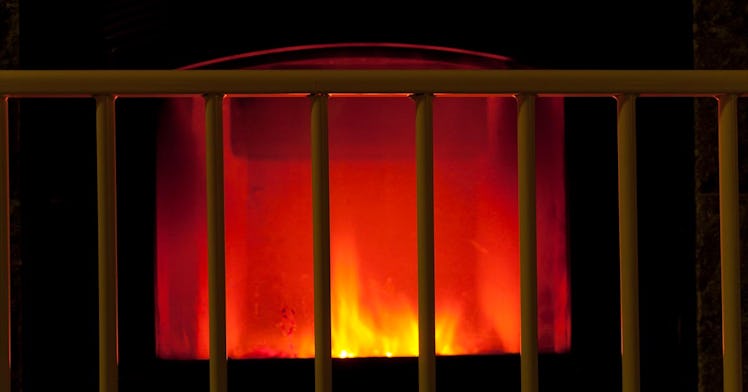How to Baby Proof a Fireplace
Burns aren’t the only safety concern when you light a fire indoors

Fireplaces warm both the ambiance and ambient air temperature of any living room. But indoor fires carry inherent risks and require stringent safety considerations. When a baby or small child is in proximity to the fire or the fireplace, those considerations change. Fortunately, it’s possible to baby proof your fireplace to prevent both burns, and non-heat related injuries.
Baby Proof Fireplace With Barriers
The risk of burns is high enough with fireplaces that it’s a good idea to set up a double-layered barrier to ensure your baby keeps a safe distance. An effective screen or fireplace door will provide enough coverage to keep any sparks from escaping the fireplace. But a second barrier should be placed far enough away to keep the doors and any brick out of reach. While segmented baby gates can be effective, they must be secured to keep them from falling or collapsing.
“One of the big culprits on fireplaces are the built-in glass doors,” says Dr. Christina Johns, Senior Medical Advisor at PM Pediatrics. “Kids go up and put their hands on them. Parents might think the doors prevent burns, but those get very hot, very fast.” According to Children’s Hospital Colorado, the glass barrier of a gas fireplace door can heat up to more than 200 degrees Fahrenheit in about 6 minutes. Moreover, it takes an average of 45 minutes for the gas fireplace glass to cool to a safe temperature after a burning fire has been extinguished.
Dr. Johns also warns parents to keep any fire tools far enough inside the barrier that kids can’t reach them. “When you use a poker or shovel in your fireplace, those get very hot at the end and stay hot because the metal is a conductor,” she says. “And so people hang them up and then walk right away thinking it’s no big deal. But their kid is curious about what they just saw mom or dad using, so they try to grab it, not realizing it can burn them.”
Baby Proof Fireplace Hearths Against Non-Burn Hazards
Long before firewood is set ablaze, it can pose dangers to small children. Johns has treated kids who required more than just a pair of tweezers to treat splinter wounds they got while playing with firewood. “We see wounds that require incision to get them out, and that results in significant drainage,” she says. “And I really don’t encourage people to store their wood where their kids can get to it if they have ambulatory or roving toddlers, I do not encourage them to destroy their wood. Close by just because if they try to climb on it those logs can fall or roll.
The other problem area can be the brick edges of the hearth, because they are far more unforgiving to a mobile baby’s constant falling than carpeted or even hard, smooth flooring. If the barrier you are using to keep your baby away from the fireplace doesn’t extend out past your hard stone surfaces, a hearthpad is a worthy investment.
And while all of these precautions work to make a fireplace safer for families with small kids, the truth is that they can also keep adults safe as well. You might be more aware of your surroundings than your toddler, but accidents still happen and hot surfaces are still incredibly unkind to adult skin. For as many reasons as they are great, fireplaces are also dangerous. But the correct safety precautions can mitigate the risks with very little effect on function or aesthetics.